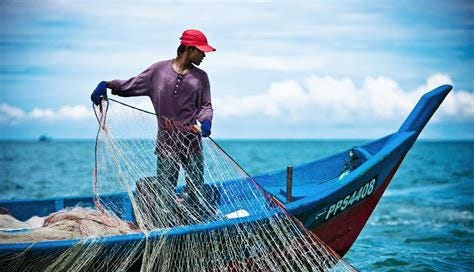DEregulating will help save the safety of our food supply.
THIS POST BY CHEF GRUEL IS A RESPONSE TO THE ONE BENEATH IT. WHAT YOU DON’T KNOW, YOU DON’T KNOW!
Gruel is the consummate expert on our fish and meat supply, when it comes to sourcing — especially how our government’s heavy-handed and wrong-headed over-regulation has actually compromised safety and quality….as well as having a detrimental effect on the environment.
I have many thoughts here, but I'll try to keep them simple.
1. China is going to flood the market with low-quality salmon, most likely treated with unknown chemicals, if we don't do something about setting up our own program.
2. They are eating our lunch because we have NO open ocean aquaculture policy. Americans say they hate farmed seafood, yet that is all they buy. We should be doing this here, the right way. If that's closed contained systems, or another species solely focusing on stock fortification (like Alaska) then that's a great start.
3. Atlantic Salmon is NOT Pacific Salmon. People need to stop conflating the two. The Pacific species is its own product.
4. America needs to play ball in this space. We can either own the technology and produce high quality products or get taken out by Chinese crap. Just look at the California White Sea Bass hatchery program - we took a once commercially extinct species and fortified it with hatcheries (fish farming).
5. Commercial fishermen need fewer regulations. We have the bounty of fish to compete at a better level, we just need to let them fish.
China: World’s first salmon farming ship to raise 8,800 tons of fish yearly | Mrigakshi Dixit, Interesting Engineering China is reportedly gearing up to launch offshore salmon farming with the development of the “Su Hai No 1” — the world’s first dedicated salmon farming vessel.
This innovative ship aims to significantly reduce China’s reliance on imported salmon by enabling large-scale, mobile aquaculture at sea.
The South China Morning Post (SCMP) reported that the vessel measures 250 metres (820 feet). The Huangpu Wenchong Shipyard in Guangzhou constructed it at a cost of 600 million yuan (US$83.6 million).
It’s projected to yield as much as 8,000 tonnes of salmon every year. The Su Hai No 1 is set to be delivered in June, with adjustments currently underway after a successful trial voyage in late April.
The vessel marks a major advancement in China’s marine fisheries. It will reduce import dependency and enhance national food security.
Boosting China’s salmon production
This innovative salmon farming vessel offers two key advantages over existing methods. As compared to stationary net-pen systems, the ship can relocate quickly to avoid dangers like typhoons and harmful algal blooms, ensuring the safety of the salmon.
Moreover, it is equipped with a facility to process salmon directly on the ship, allowing for the delivery of fresh, processed fish to domestic markets in as little as 24 hours. The ship operations are expected to begin this autumn in the Yellow Sea off Lianyungang, Jiangsu province.
It will utilize the cold-water eddies in the Yellow Sea for the production. And if all goes to plan, the first harvest of Chinese-farmed salmon will arrive next year. This vessel will help quench a growing thirst for salmon among Chinese consumers. Currently, over 80% of China’s salmon consumption relies on imports, primarily from Norway and Chile.
Last year alone, China imported over 100,000 tonnes of salmon, a number projected to double to over 200,000 tonnes by 2030. Transporting Atlantic salmon from distant sources incurs logistical and environmental costs, notably a large carbon footprint from shipping and resource-intensive aquaculture.
The Su Hai No 1 is a direct response to this demand and reduces environmental pressure. The vessel is estimated to have a farming capacity of 8.3 million cubic meters of seawater.
Advancing marine farming practices
SCMP reported Beijing is actively promoting the development of its ocean economy, viewing it as crucial for bolstering national food security.
This prioritization comes in response to pressing global challenges such as climate change, evolving geopolitical landscapes, and ongoing trade tensions with Western nations, all of which highlight the need for robust and diversified food sources.
Moreover, last year, a joint effort by China’s Ministry of Agriculture and Rural Affairs and the Ministry of Natural Resources led to the release of guidelines.
These guidelines commit to advancing marine farming practices as well as safeguarding the ocean environment. The Conversation stated that China’s push to farm Atlantic salmon domestically has been difficult, leading to the use of rainbow trout as a “substitute” to satisfy the increasing demand for salmon.
This was solidified in 2018 when the Chinese government officially allowed rainbow trout to be marketed and sold under the “salmon” label.




I agree with this 100% . That means we need to farm the sea creating natural aquascapes like farmers farm land. Farming the fisheries has been done for cenrtuies and uses what nature does as its guide. Tis is he way small farms existed for centuries until industrial farming came along. This does not need to or should be an industrial project. The last thing we need is some momopoly on aquafarming.
Wrong.